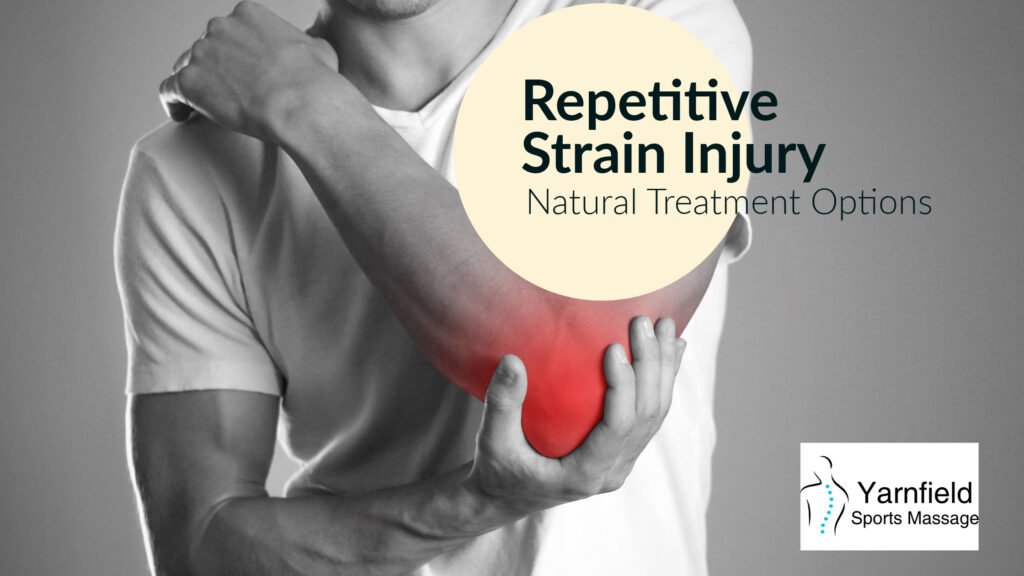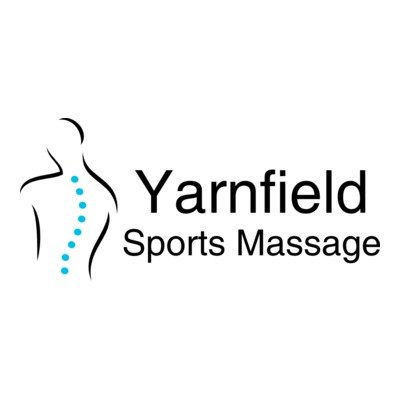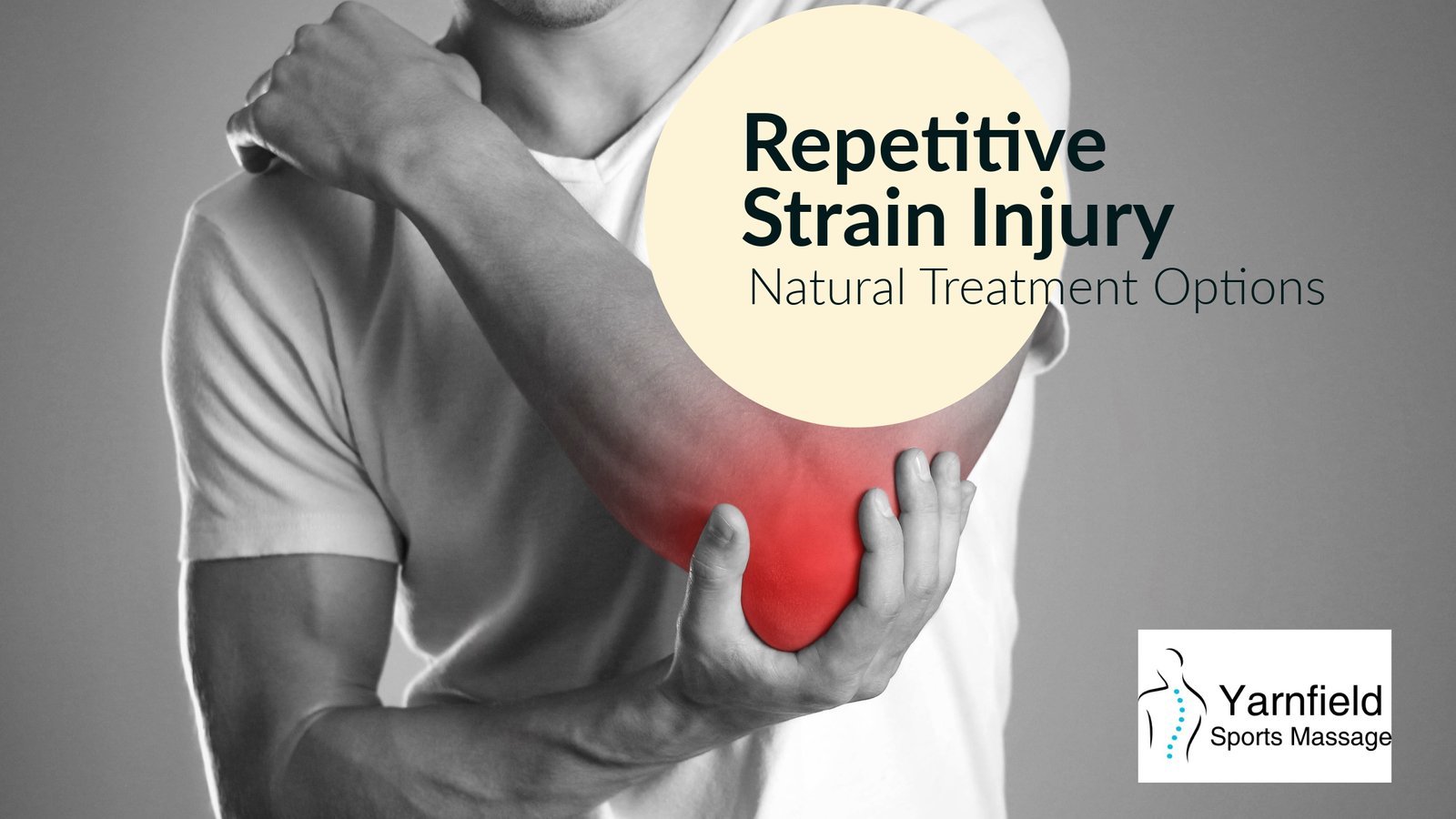What is Repetitive Strain Injury (RSI)
Repetitive Strain Injuries, or RSI for short, are soft tissue injuries, to muscles, tendons or ligaments, that are caused as a result of overuse. The injury may also affect nerves. Doing the same movement over and over again for a prolonged period of time can cause tightness in the muscle. This can lead to a lack of oxygen and nutrients because the blood flow to the area is restricted. Without adequate circulation, the tissues are not able to repair, and toxins build up. Scar tissue forms, causing weakness and restriction.
Symptoms of Repetitive Strain Injury
Symptoms of Repetitive Strain Injury can include pain, tenderness, stiffness, tingling, numbness and muscle weakness. Symptoms usually come on gradually over time and can reach a point where everyday activities can become difficult.
Two Types of Repetitive Strain Injury
There are two categories of Repetitive Strain Injuries, Type 1 and Type 2.
Type 1 RSIs are injuries that are recognised as a specific condition. For example; Tennis Elbow, Golfer’s Elbow, Carpal Tunnel Syndrome, Tendonitis, Bursitis, Trigger Finger and ITB Syndrome are all Type 1 Repetitive Strain Injuries to name a few.
Type 2 RSIs are simply injuries that are not classifiable as any of the Type 1 conditions.

Natural Treatment for Repetitive Strain Injuries
The focus of treatment for RSIs is on increasing circulation and blood flow to the area. This will break the cycle of tissue degeneration and activate the body’s natural healing process so that tissue can be repaired. The first stage or treatment aims to reduce pain and start the healing process. When the pain has reduced considerably, strengthening exercises may be introduced to help rebuild the muscles.
Rest
Rest with Repetitive Strain Injuries is a fine balance. Complete rest, i.e., immobility, is not advisable because it is the contraction and relaxation of the muscles that helps to circulate blood around the body. If we immobilise a limb, it will reduce circulation which will be counter-productive. Pain is our body’s way of telling us to change and we may not be able to carry on with every day tasks if we are in pain. Avoiding the repetitive movement that caused the injury in the first place can help. This isn’t always possible if you rely on those tasks as part of your job or looking after your family, but trying to avoid heavy lifting if you have tennis elbow for example can give the muscles a chance to relax and start the healing process. Try to keep movements within your pain tolerance for a few days if you can. Sometimes RSIs can be caused by poor posture or alignment. Correcting the way we move, sit or stand can help to improve symptoms and prevent re-injury.
Apply Heat
Applying a heat pack for 10 minutes at a time, several times a day, can help to improve circulation and relax the muscles.
Having a warm bath will also help to relax the muscles. Magnesium is an essential mineral for muscle health, so adding Dead Sea or Epsom Salts to the bath can provide your body with minerals which may also help recovery. The minerals will be absorbed through the skin.
Supplements or Diet Modification
It is thought that some Repetitive Strain Injuries such as carpal tunnel syndrome may be caused by a lack of Vitamin B6. B2 and B12 supplementation has also been shown to improve symptoms. You may want to consider taking a B complex supplement in combination with vitamin C. Vitamin C helps absorption of the B vitamins. However, please do your own research and consult with your doctor or health care practitioner before taking supplements.
Natural Pain Killer
Pain killers and anti-inflammatory drugs are often the go to recommended treatment for RSIs, however it is worth noting that the body’s inflammatory response actually increases circulation and promotes healing, so taking anti-inflammatory medication may slow down the healing process. This is also why ice is not recommended. Ice will temporarily reduce the pain, but it will also reduce circulation which may prolong the healing process.
Pain killers will not cure the problem, but rather just mask it. Therefore, pain killers will not help to heal the Repetitive Strain Injury, but they may help you to accomplish vital everyday tasks that may be impossible if the pain is severe.
Having said that there are some natural alternatives to pain killers and anti-inflamatory drugs that may be worth considering.
Cod Liver Oil contains omega-3 fatty acids which helps to reduce inflammation. It can also help to lubricate the joints which may reduce pain. Cod Liver Oil has the added benefit of containing vitamin D and A which may also be helpful for soft tissue repair.
Over the counter pain-killers are often recommended to help with the pain experienced with RSIs, however a natural alternative may be to add turmeric to your diet. Turmeric has anti-inflammatory properties and has been shown to reduce pain severity. It is best to take Turmeric with Black Pepper to maximise uptake.
Again, do your own research and consult your doctor before taking supplements or natural remedies.
Massage and Remedial Therapy
Manual work to the affected area is often a very successful treatment option for Repetitive Strain Injury. Massaging the affected tissues can help to improve circulation, realign scar tissue and remove toxin build ups, which in turn promotes the body’s natural healing processes. Remedial Soft Tissue Therapy can help to strengthen weak muscles and correct imbalances, poor movement patterns or alignment to relieve pain and help to prevent re-injury.

Recovering from a Repetitive Strain Injury
There are many things that you can do to help speed up recovery of a Repetitive Strain Injury using a natural approach. I work with clients at Yarnfield Sports Massage, using a combination of sports massage, remedial soft tissue therapy and home care exercises to help improve circulation, reduce pain and re-educate movement patterns. Recovery is often faster when clients are able to carry on with treatment at home, so I show clients how they can use massage and heat therapy to help reduce the pain. When clients are ready to move onto the next stage in the rehabilitation process, I will teach strengthening exercises that can easily be done at home, as well as combining that with remedial soft tissue therapy techniques that we use during massage treatments.
At home you can use heat treatment and self-massage to help relax the area and promote healing, as well as ensuring that your diet contains essential vitamins, minerals and healthy fats that can promote muscle and joint health.
Final Thoughts
It is important to feel empowered in the healing and rehabilitation process. Pain can be scary, but once we understand it, we can work with it and use it as a tool to guide the therapy process. Once we understand our injury, we can work with purpose towards improvement. Having a positive outlook is another contributing factor towards a faster recovery.


Leave a Reply